DEFINITION
Heat exchanger is a piece of equipment used to transfer heat from one media to another.
There can be two or more fluids involved in the process of exchange. Due to temperature gradient heat flows from the hotter fluid to the colder one. The rate of heat exchange between the hot and cold fluid is dependent on the physical properties of fluid, flow rates, temperature and by the surface separating the two streams.
In industrial application this above fundamental is used in many different arrangements with variation to serve the purpose. Heat exchangers can be classified according to transfer process, no of fluids involved in process, fluid phases involved, according to exchanger construction, according to fluid flow path arrangements inside exchangers and many more. Some of these are stated here.
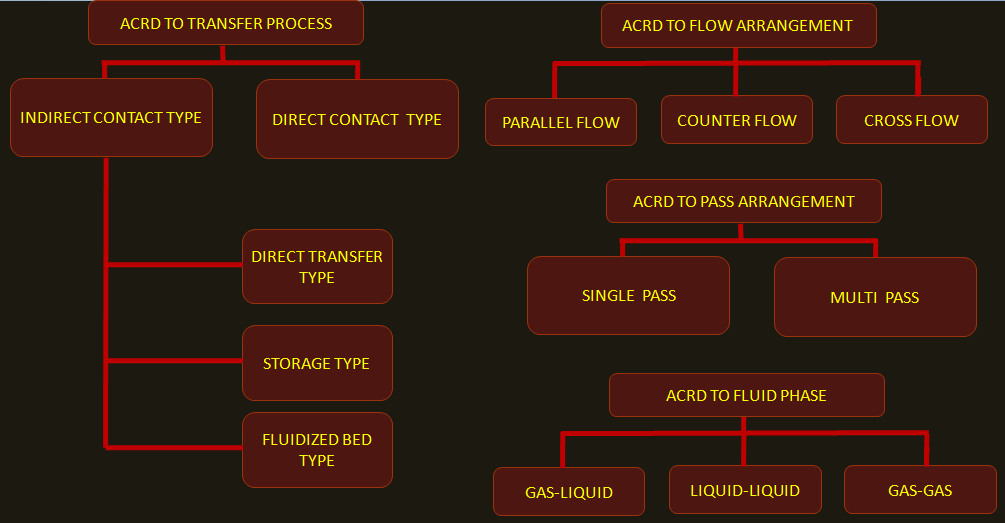
Classification according to transfer process:
A. Indirect contact type:
In an indirect type heat exchanger the fluids which are involved in heat transfer do it through a separating wall, they do not mix with each other for example a shell and tube heat exchanger where heat transfer takes place through tube wall.
This can be further divided into
1. Direct transfer type (recupearator):
Those exchangers in which the heat transfer between fluids takes place directly through a separating wall (for e.g tube/pipe wall) is called a direct transfer type or simply a recuperators. Here the fluids do not mix with each other, there is a continuous flow of heat from hot fluid to cold fluid and there are no moving parts.
Example- shell & tube heat exchanger, tubular heat exchanger, plate heat exchangers.
2. Storage type:
Also called as fixed matrix or fixed bed regenerator this is a periodic flow heat transfer device. This makes use of matrix which has high thermal capacity, through which hot and cold fluid pass alternatively.
At least two matrices are required. As shown in below Figure-1A initially matrix A is heated by hot fluid and matrix B is cooled by the cold fluid. After certain interval of time the valves are operated such that hot fluid flows through previously cooled matrix B and get cooled by transfer heat to it. Similarly cold fluid pass through matrix A which was previously heated, the cold fluid takes heat from it to become heated.
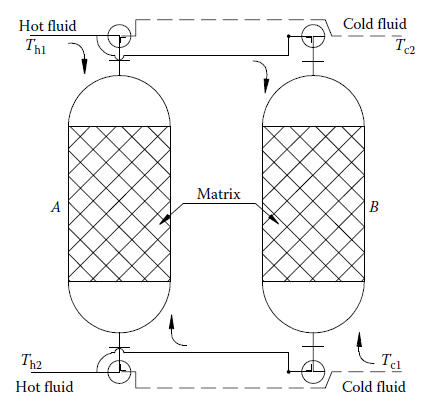
In recuperators fundamental loss occurs only through the wall during heat conduction, but in Storage type regenerators as we are using intermediate thermal storage there is a bigger heat loss during heat in and out from the intermediate storage.
Fixed bed air preheater is an example of this. An working animation can be seen in clip below for storage type exchangers.
3. Fluidized bed type:
In this type fluidized bed of pellets recover heat from hot gases and transfer this heat to cold gas. As shown in below Figure-1B at basic level it consists of a insulated cylindrical tower with an upper and lower chamber. Each chamber has several horizontal perforated trays. Hot exhaust gases enter the upper chamber near its base and rise to the outlet near the top. It heats the alumina pellets while they fall. The heated Pellets fall through an aperture into the lower chamber, where they give up their heat to the cold air. The cold air would circulate through the lower chamber at its base and exists near the top. For recycling the pellets an auxiliary pneumatic system is incorporated.
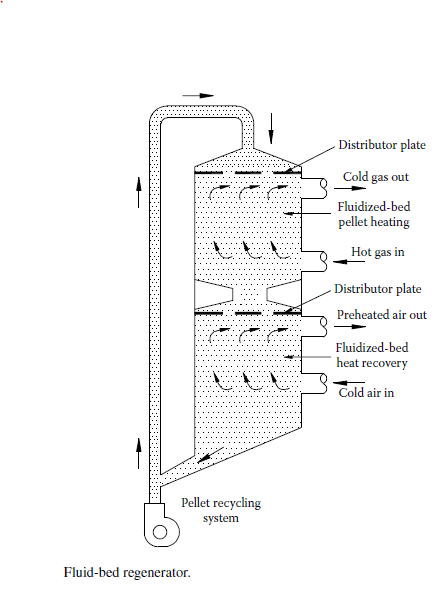
In other cases and as depicted in fig-1C the hot air passes through the bottom of the exchanger tower. There is finely divided solid material at bottom of exchanger. When the upward fluid velocity is low, the solid particles will remain fixed and the fluid will pass through the interstices of the bed. But when the fluid velocity is high the solid particles will be carried away with the fluid. When the upwards drag force on the particles are higher than the weight of the solid particle the solid particles float inside the whole bed volume. This solid particle mixed with gas floating throughout the tower behaves like a liquid. This characteristic is referred to fluidized bed condition.
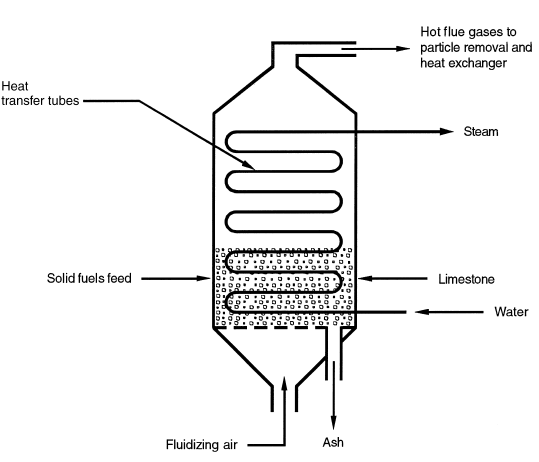
Very high heat transfer coefficient is achieved on the fluidized bed. Fluidized bed heat transfer mechanism is used in chemical reactor engineering, drying, mixing, absorption processes.
An animation for the same is shown in below video
B. Direct contact type:
In direct contact type heat exchangers the two fluids are not separated by the wall and come into direct contact, exchange heat and are then separated.
As there is no extra wall or barrier for heat transfer, closer temperatures are attained. Very often this heat transfer is accompanied by mass transfer.
Example- cooling towers, scrubbers etc.
Classification according to flow arrangement:
A. Parallel flow: Here both fluids enter at the same end, flow parallel to each other in the same direction and leave at the other end.
B. Counter flow: Here both fluids flow parallel to each other but in opposite direction. This is the most efficient flow arrangement among others in single pass arrangement with same parameter.
C. Cross flow: Here both fluids flow parallel perpendicular to each other.
The above flow arrangements are depicted below in figure
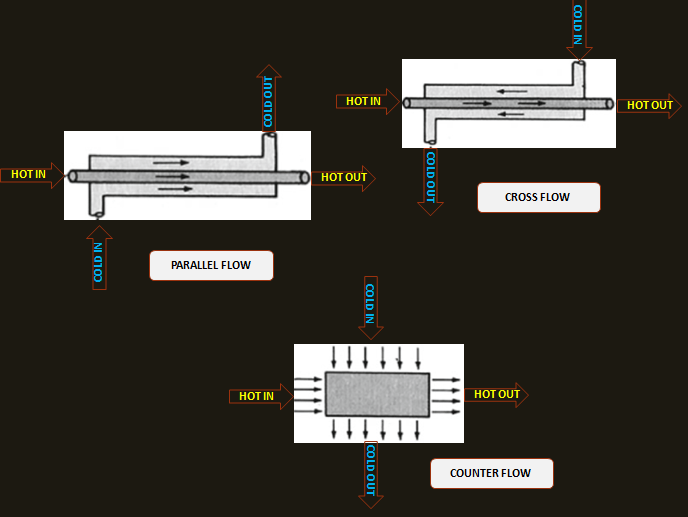
Classification according to pass arrangement:
A. Single pass: Here the fluid flows through the heat exchanger along its length once.
B. Multi pass: Here the fluid flows through the heat exchanger along its length and then it’s reversed to flow again through the whole length again. In multi pass arrangements the flow can pass along the length of heat exchanger 2 or more times. Multi pass arrangements are used when design of heat exchanger results in extreme length, significantly low velocities or low effectiveness.
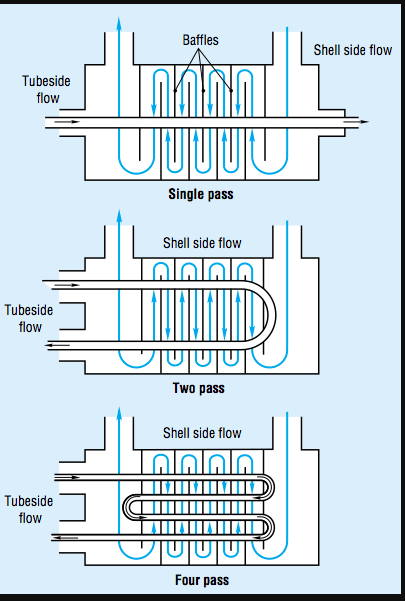
Classification according to phase of fluid:
A. Gas-Liquid: Gas liquid heat exchangers are mostly tube-fin type heat exchangers. The air cools the fins and tubes through which the liquid is flowing just like a radiator. Oil cooler in aircraft’s & movable gas turbine skids, intercooler and after coolers in compressor, condenser and evaporators of room ACs are an example of this.
B. Liquid-Liquid: most liquid- liquid exchangers are either shell & tube type or plate type heat exchangers and very common in process applications.
C. Gas – Gas: These types of exchangers are employed in exhaust gas air preheating recuperator, rotary generators etc. the size of gas-gas exchangers is quite large as convective heat transfer coefficient of gases is low compared to liquid.
Heat exchangers are also classified according to process function and usage in petrochemical industries as stated below.
A. Exchanger:
Heats one stream and cools the other. There is no heat loss or physical change in either of the flowing media.
B. Cooler:
Cooler Cools liquid or gases without condensation, by transferring heat to cooling water, atmosphere and other Medias. All intercooler and aftercoolers are classified as coolers. Process coolers for industry provide a high and constant degree of precision of the process output temperature in all atmospheric conditions.
C. Condenser:
It condenses vapour or vapour mixture by transferring heat to cooling water, atmosphere and other Medias. Condensers are used for efficient heat transfer during phase change from gas to liquid. Most often condensers are either shell and tube type or air fin type. Condensers may be gas cooled or liquid cooled.
D. Chiller:
It uses refrigerant to cool a process stream below the freezing point or below the cooling water temperature available in plant.
D. Heater (non-fired):
Heaters generally heats up the process fluid up to its boiling point without much of the vaporization. The heating process can be accomplished by steam, or hot oils.
E. Reboiler:
It is generally used in bottom of towers for fractionation process. The reboiler takes the colder fluid from the bottom of the tower, re-boils it and sends it back to the tower for further. The reboiler can be in the shape of a conventional shell and tube design or can be a simple coil (or U-tube bundle) inserted into the bottom of a distillation tower. Please see a simple animation of reboiler process produced here.
F. Waste heat boiler:
It uses heat from exhaust gases of gas turbines that would have been otherwise wasted, to generate steam.
G. Steam generator:
It uses heat of the process fluid to produce steam.
H. Vaporizer:
It vaporizes parts of process liquid just like an evaporator.
I. Evaporator:
Evaporator is used to concentrate the solutes within a solution by adding heat and vaporizing a portion of the liquid solution.
In some specific application like in refrigeration cycle the evaporation term is used for the apparatus which evaporates the cold liquid refrigerant by transferring heat from the process fluid.
Furthermore, as stated below heat exchangers can be classified according to its construction as stated below.
1. Shell and tube heat exchangers
2. Plate type heat exchangers
3. Spiral heat exchangers
4. Double pipe heat exchangers
5. Air cooler heat exchangers
These categories will be discussed in a separate article.
REFERENCES:
Kuppan Thulukkanam, 2nd edition,2013, Heat Exchanger Design Handbook, crc press, new york
Ed Bausbacher, Roger Hunt,1993,Process Plant Layout And Piping Design,PTR prentice -hall inc ,newjersey
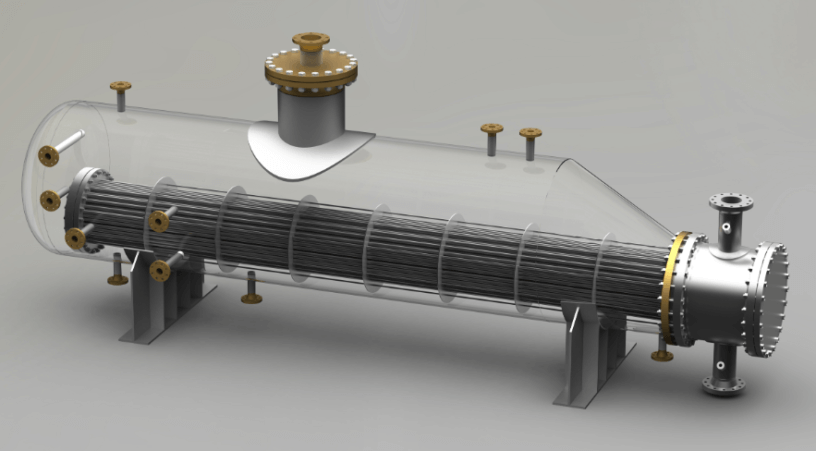
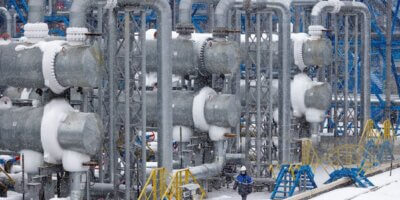
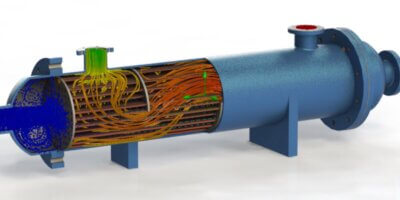
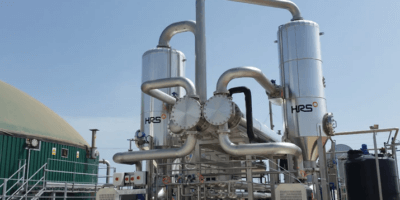
Leave a Reply